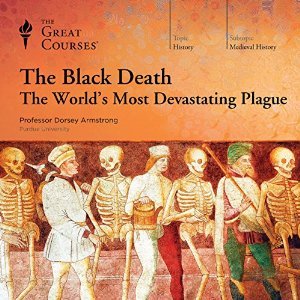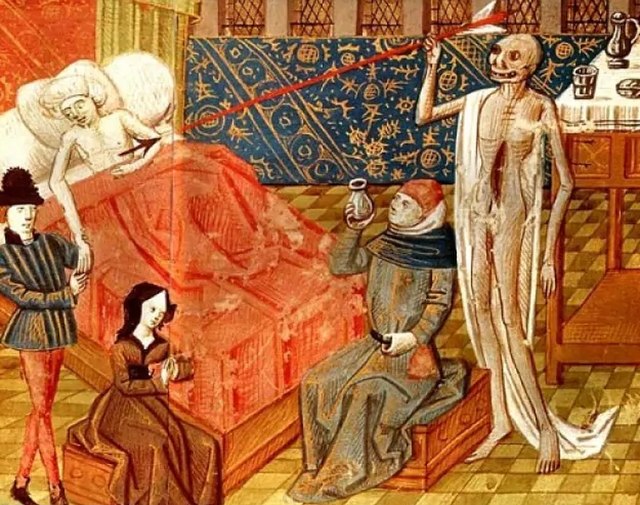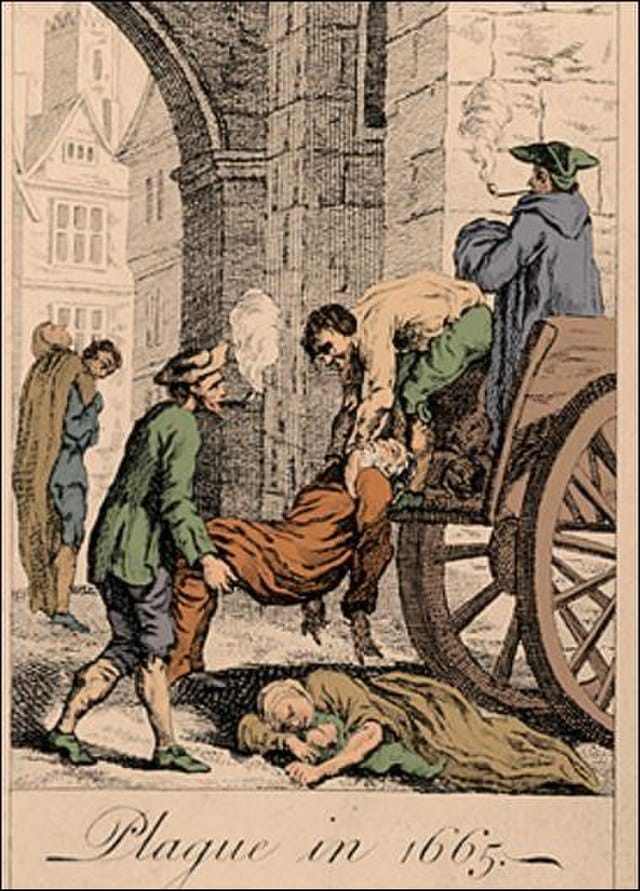 An Engaging Deep-Dive Into History
An Engaging Deep-Dive Into History
Author: Dorsey Armstrong
Browsing through the Audible catalog one day, I ran across Dorsey Armstrong’s 24 lecture series on the Black Death. The Black Death shaped so much of what we call modern day society, and the ramifications and horrors of a world-wide plague continue to (rightfully) scare us to this day. Even those of us who aren’t especially intrigued by history find the Black Death equal parts interesting and ultimately terrifying. After all, the Covid-19 pandemic proved that the days of worldwide sickness are far from behind us, especially since we live and breathe in an increasingly global world. Understanding how a series of devastating events that started in 1348 and raged for centuries shaped the world we live in, socially, economically, religiously, and culturally is the key to continuing to understand how our world is created and shaped by the uncontrollable events and natural catastrophes that surround it.
Dr. Dorsey Armstrong is an Associate Professor of English and Medieval Literature at Purdue University. Despite the brainy nature of this position and her in-depth, seemingly endless historical knowledge, Armstrong keeps it simple and entertaining for her audience, introducing us to history in an engaging manner. Her letting-you-in-on-the-secret confidential tone, the way she makes history come alive, not as some history books tend to do, evokes what the people who lived during the various insurgences of Black Death must have felt and experienced. This is not a collection of names and dates, but more a story of our ancestors. One that hurts at times. The Black Death is full of sadness, naturally, but there are some rays of hope even in this story of devastation.
Armstrong starts by giving us a bit of a medical background on the Black Death – what it is, what it isn’t, and what might have really been happening at the time. It’s not as cut and dried as you might think. For instance, several different diseases might have been occurring at once, and scientists and doctors are still debating on exactly how the plague spread. There are several good theories and ideas about what exactly happened, and Armstrong gives us just enough medical background (and understanding of a flea’s digestive system) to follow the ideas without overwhelming us with the technicality.
From there, we follow the course of the plague. It was hardly a once and done event. Instead, it reoccurred in batches, literarily haunting Europe for hundreds of years. During this time, Armstrong explores what medieval people knew about the plague, or thought they knew, how what we know today as quarantine was an idea started in the Middle Ages to protect uninfected populations (so, the medieval people weren’t as clueless and superstitious as TV has led us to think), and how various classes reacted to the threat of plague. Some people ran, some stayed. The plague found most in the end either way.
What you may not know about the Black Death – what I certainly didn’t know – was that it was the catalyst of dramatic social changes, including a breakdown of the feudal class system and a creation of a rising middle class and the ability for persons to move out of the class to which they belonged. It also shaped culture, including the Protestant Reformation and the Renaissance, in ways that might have been impossible if it wasn’t for the Black Death.
Of course, there were also changes in artwork (remember those gruesome memento moris you studied in high school) as well as some fascinating individual stories and developments and differences in religious beliefs throughout the time of the plague (self-flagellation anyone).
Overall, The Black Death: The World’s Most Devastating Plague was a fascinating series of lectures that listened more like informal chats and evoked a time in history that has influenced how we live today. Through Armstrong’s attention to detail and clear, succinct explanations, the audience is able to engage with history as a living, breathing entity, a story of people much like ourselves who confronted devastation and either rose to the occasion or failed in the eyes of history and mankind. It’s compassionate, through, and never condescending. This well-told tale is ultimately our own story and perhaps, a warning for the future.
– Frances Carden
Follow my reviews on Twitter at: https://twitter.com/xombie_mistress
Follow my reviews on Facebook at: https://www.facebook.com/FrancesReviews
- Book Vs Movie: The Shining - April 6, 2020
- Thankful For Great Cozy Mysteries - December 13, 2019
- Cozy Mysteries for a Perfect Fall - October 20, 2019



